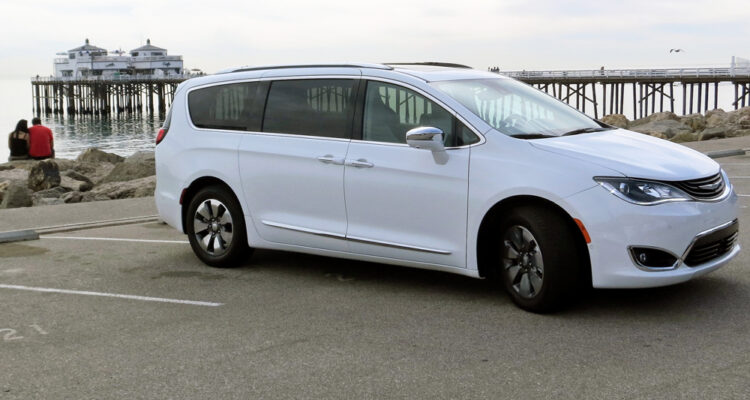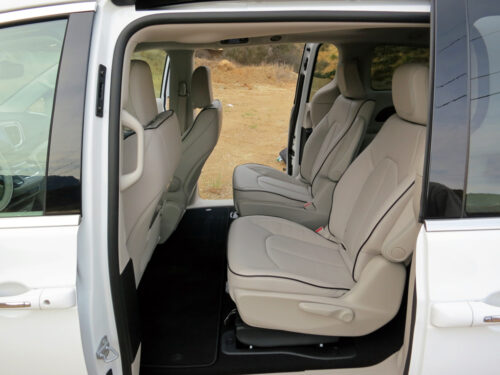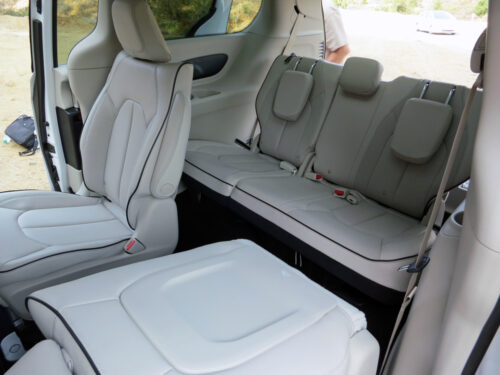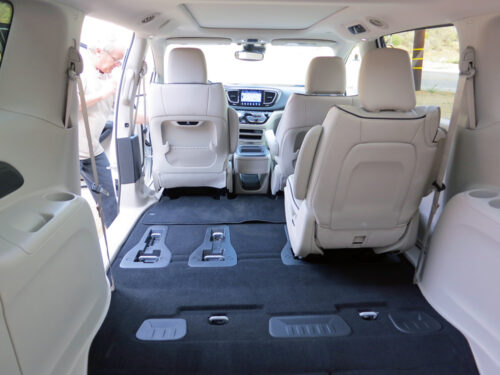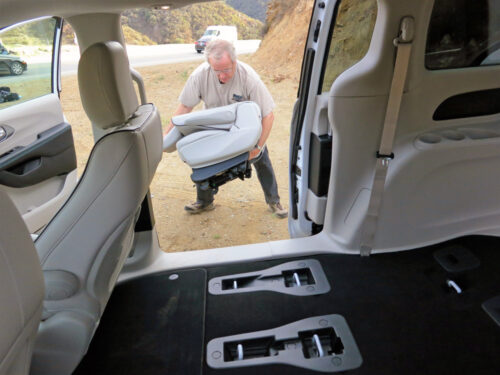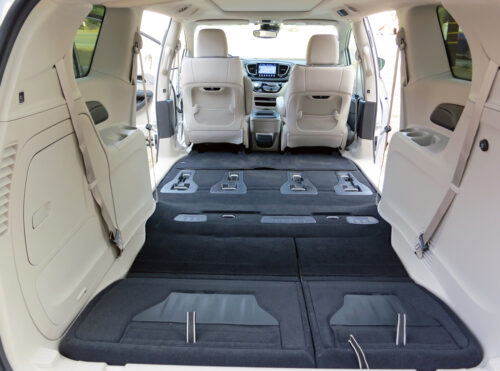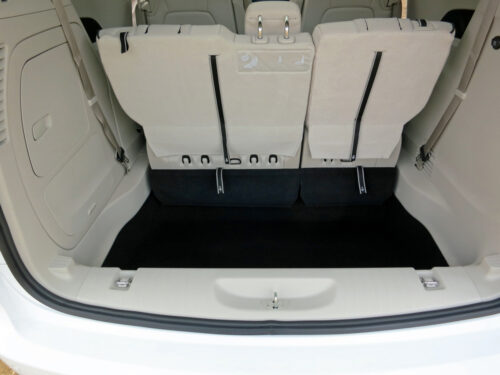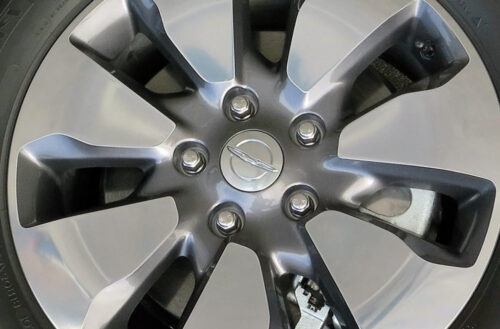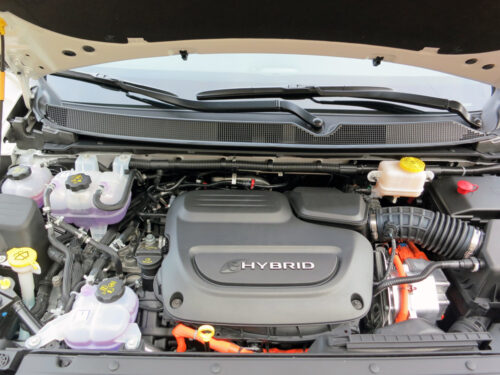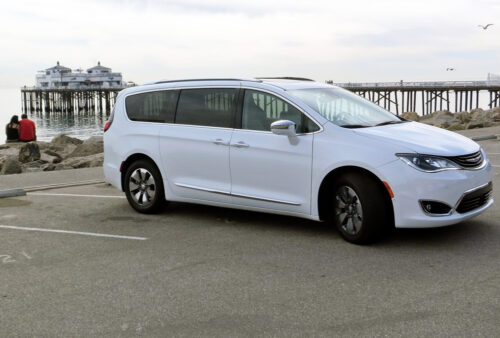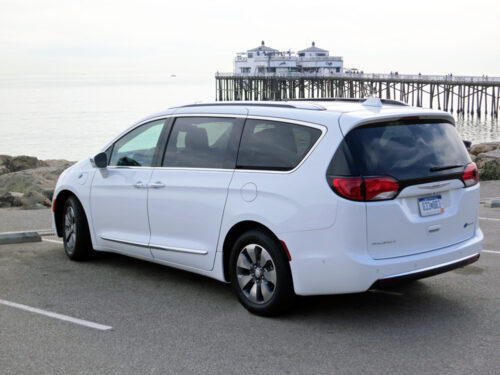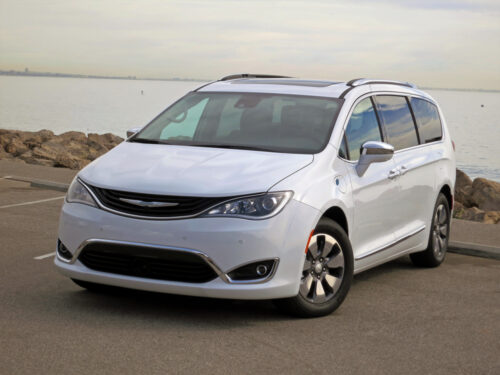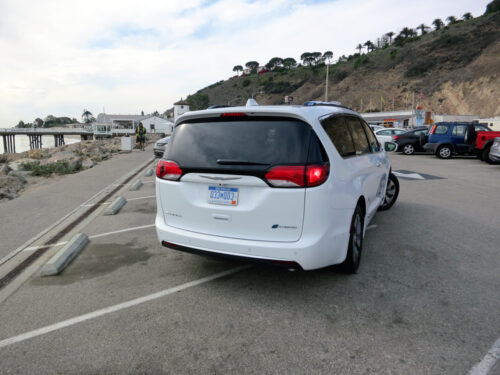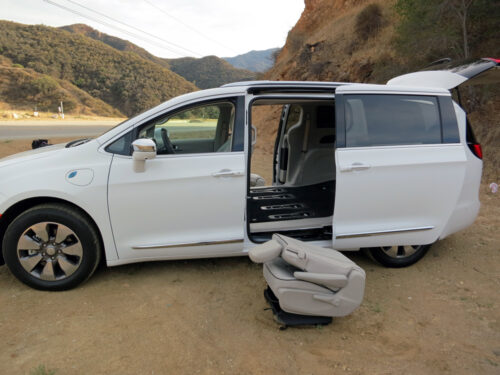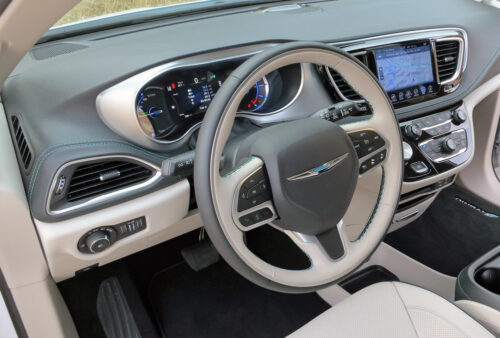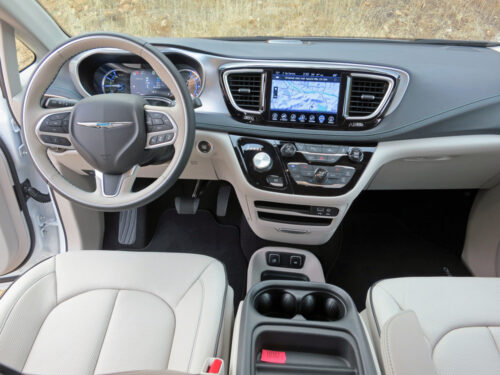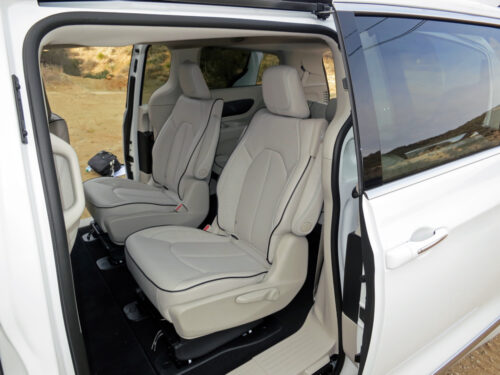Chrysler invented the minivan 30 years ago and has just added another feature to its long list of firsts – the new Pacifica plug-in hybrid.
If you like the gasoline version, you’re not going to be disappointed with the minor compromise to go hybrid – the loss of second row Stow ‘n Go to make room for a 16 kWh lithium ion battery. Third row Stow ‘n Go remains.
There’s not much visually different between the hybrid and the gasoline-powered Pacifica Limited except for the charge port on the left front fender, wheels and a slightly different grille to go with the Hybrid badge.
The interior is virtually identical except for the gauges which offer information on the hybrid system’s operation and a charging indicator light on the top of the dash.
Other than that, the interior is the same as the gasoline lineup’s Limited trim – all leather and high-class trim and all the neat features like 8.4-in. Uconnect touchscreen and hybrid-specific 7-in. colour in-cluster info screen.
Safety features on the test vehicle include Surround View camera, parallel and perpendicular park assist adaptive cruise control with stop and go, forward collision warning with active braking, lane keeping assist and blind spot monitor with cross-path detection just to name a few. Of course the seats are heated and ventilated and there’s power everything.
If we’d had kids along, they’d have been happy campers because they’d have been able to watch the Uconnect Theatre.
In fact, the only option is the tri-pane sunroof.
Under the hood is a hybrid modified version of the 3.6L Pentastar V6 gas engine coupled to an electrically variable transmission featuring two electric motors, both capable of delivering torque to the wheels through the use of a one-way clutch.
The battery pack can be fully recharged via the 6.6-kWh on-board charger in as little as two hours using a 240-volt (Level 2) charger, available from Mopar through dealers. With a 120-volt (Level 1) charger, which comes standard with the vehicle, recharging takes about 14 hours. Charging times can be scheduled to take advantage of off-peak rates.
As the vehicle decelerates, the high-voltage motor becomes a generator to charge the battery while regenerative braking also adds to the Pacifica’s range.
Total system output is an estimated 260 horsepower. (Company spokesman would not give torque estimates).
The test routes gave us plenty of time to evaluate city and highway driving characteristics and although I found the hybrid’s steering to be slightly lighter, there’s not much difference between the minivan siblings when it comes to driving.
Pacifica Hybrid is quick off the line and responds to my throttle demands without delay making city driving in the L.A. area bearable – and really quiet since we are in electric mode almost exclusively.
And there’s no lack of performance in the hills east of the city where roads are twisty and full of hills and descents. On long ascents, power switches seamlessly from full battery to gasoline engine and the switch back is just as undetectable when we head downhill.
The additional weight of the hybrid system has no apparent effect on the Pacifica’s smooth, quiet ride.
Naturally, in electric mode the ride is quieter because engine noise is zero. Wind and road noise are negligible (you can easily talk to front seat passengers from the third row.)
Top speed in electric mode is about 120 km/h and I find we’re spending a great deal of time using wattage rather than gasoline.
This seven-passenger van, one of the finalists in the AJAC Canadian Utility Vehicle of the Year competition, is a pleasure to drive on any kind of road surface.
The seats are comfortable, visibility is excellent and it’s remarkably stable in the twisty bits.
FCA says total estimated range of the Pacifica Hybrid is up to 850 km with full battery charge and full tank of gas. Electric range in city driving is up to 48 km. The company estimates fuel economy to be 2.9 equivalent litres per 100 km or, if you like, 97 imperial mpg.
In short, it will go a long way before it needs any kind of fuel replenishment, which brings up another point: since drivers could conceivably go months without needing to add gas, Pacifica monitors the average age of fuel in the tank and if needed will shift from electric to hybrid mode to cycle through any fuel that’s more than 90 days old, eliminating the need to add fuel stabilizer.
So far so good.
The only drawback is setting up full cargo capability. With second row Stow ‘n Go gone, the captain’s chairs have to be removed which presents some problems: you have to remove the second row seats which, at 68 lb. apiece, is awkward. Then, after you wrestle them out, what do you do with them? Then you’re going to have to put them back at some point. Mom isn’t likely to perform this transformation.
However, if you do wrestle them out and fold them down, you have a flat floor that will accommodate all manner of stuff, including 64 full sheets of quarter-inch plywood.
MSRP on the Windsor-built Pacifica Hybrid is $56,495 for those of us who live in provinces unwilling to give incentives for such vehicles. In Ontario, the vehicle qualifies for $14,000 incentive (plus up to $1,000 for a Level 2 charger), in Quebec it’s $8,000 (plus up to $600 for Level 2 charger) and in B.C., the payback is up to $8,250.
Sucks to be me.
2017 Chrysler Pacifica Hybrid
Price as tested (before taxes): $56,495
Freight: NA
Configuration: front-engine, two-wheel drive
Engine/transmission: 3.6L V6 / variable automatic with two electric motors
Power/torque: 260 hp/ NA
Fuel (Capacity): Regular (64.3L)
Combined fuel economy ratings (L/100 km): 2.9 L/100 km (estimated)
Warranties: 5-years/100,000 km (hybrid components)
Competitors: none
Related links:



